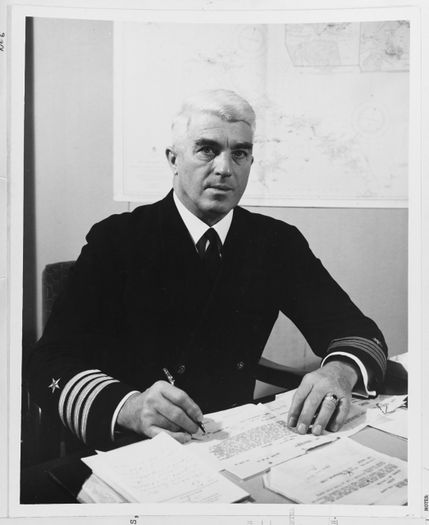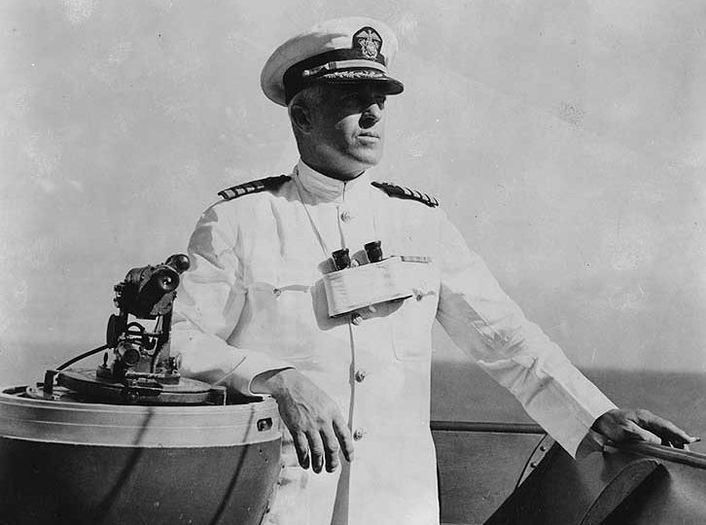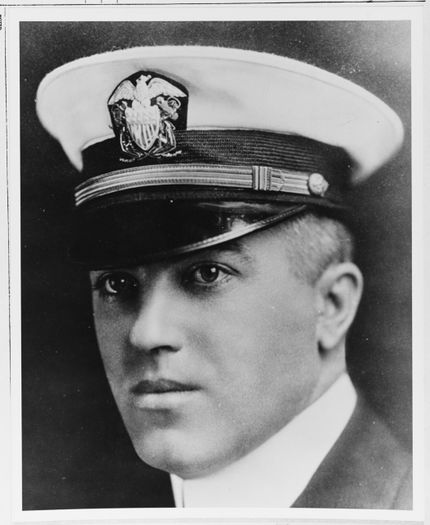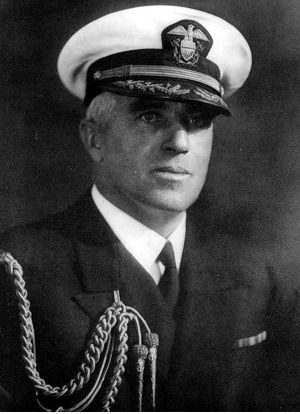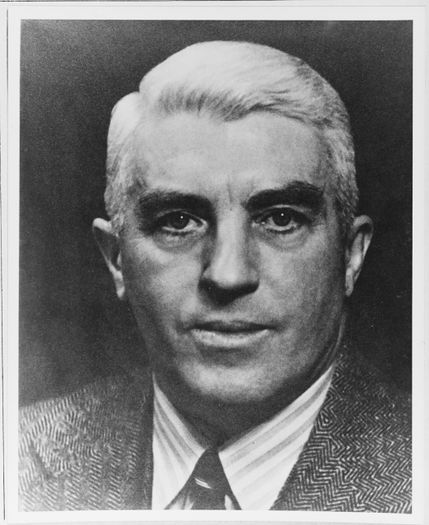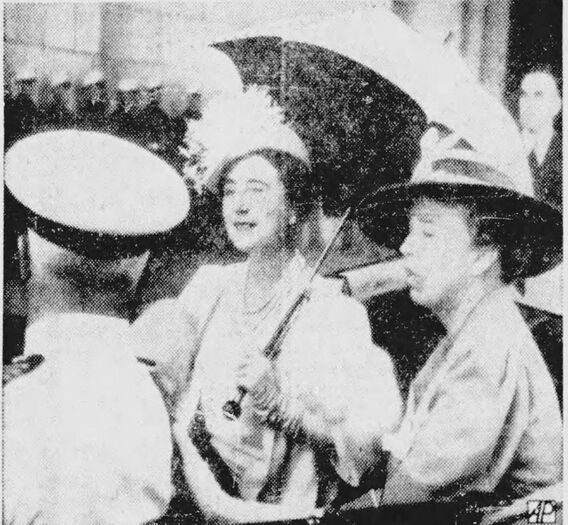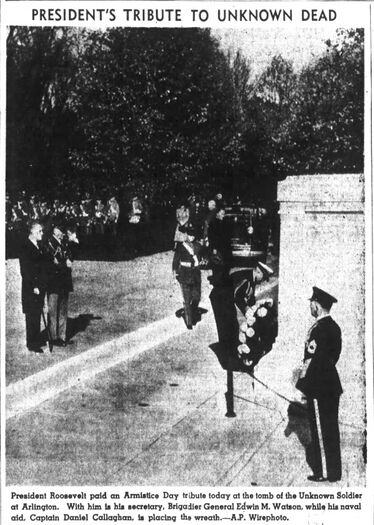DANIEL J. CALLAGHAN, RADM, USN
Daniel Callaghan '11
Lucky Bag
From the 1911 Lucky Bag:
Daniel Judson Callaghan
San Francisco, California
"Dan"
DAN came to the Academy a quiet, steady fellow, and leaves it just as quiet, but steadier. One of the very few men who have not changed their good habits and who have not acquired bad ones. He has a rare combination of straight-forwardness, dignity, and generosity, that makes him one of the most respected and admired men in the Brigade. One of the big, strong men of the class, and his athletic record is enviable despite the fact that he has been handicapped by injuries every season. His buzzard Second Class year and stripes the next came as no surprise to his friends; his success as a three-striper has shown that he deserved all he got. He has a clear, level head and a remarkable memory, but his class standing has suffered because of his extensive letter-writing. His claims to being a Red Mike have suffered sadly during the last two years.
White Numerals (4), White N 2d (3), White N (2), Hustlers, Lucky Bag Staff
Daniel Judson Callaghan was born in San Francisco, July 26, 1890, where he lived until his appointment to the Naval Academy. Attended St. Ignatius College in San Francisco. He was appointed from California by Senator Perkins.
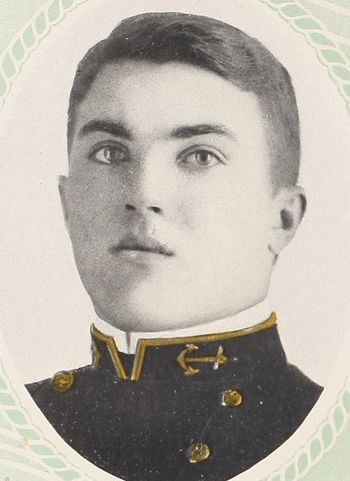
Daniel Judson Callaghan
San Francisco, California
"Dan"
DAN came to the Academy a quiet, steady fellow, and leaves it just as quiet, but steadier. One of the very few men who have not changed their good habits and who have not acquired bad ones. He has a rare combination of straight-forwardness, dignity, and generosity, that makes him one of the most respected and admired men in the Brigade. One of the big, strong men of the class, and his athletic record is enviable despite the fact that he has been handicapped by injuries every season. His buzzard Second Class year and stripes the next came as no surprise to his friends; his success as a three-striper has shown that he deserved all he got. He has a clear, level head and a remarkable memory, but his class standing has suffered because of his extensive letter-writing. His claims to being a Red Mike have suffered sadly during the last two years.
White Numerals (4), White N 2d (3), White N (2), Hustlers, Lucky Bag Staff
Daniel Judson Callaghan was born in San Francisco, July 26, 1890, where he lived until his appointment to the Naval Academy. Attended St. Ignatius College in San Francisco. He was appointed from California by Senator Perkins.
Loss
Daniel was lost when USS San Francisco (CA 38) was severely damaged during the Naval Battle of Guadalcanal on November 13, 1942. He was embarked as Commander of Task Force 67.
Biography
From Wikipedia:
Callaghan was born on July 26, 1890, in San Francisco, California, the son of businessman Charles William Callaghan and Rose Wheeler Callaghan. The family was devout Roman Catholic. One of his younger brothers, William Callaghan (1897–1991), would later go on to a career in the US Navy as well. Both brothers studied at Saint Ignatius College Preparatory in San Francisco, the elder graduating in the class of 1907. He then graduated from the United States Naval Academy in 1911. His first assignment was on board the armored cruiser USS California (ACR-6), in command of a turret with twin 8-inch guns. He was promoted to the rank of Ensign on May 21, 1912.
His second assignment was on the destroyer USS Truxtun (DD-14) in mid-1913. He was promoted to Lieutenant (Junior Grade) in May 1915. In his first few years of service, he developed a reputation as a conscientious sailor, noted for avoiding heavy alcohol consumption and regularly attending Mass. His dedication to naval gunnery also became apparent. Some years later, one of his captains, Joel Pringle, would write: "[Callaghan's] devotion to duty, sound judgment and ability to inspire loyalty in his subordinates have resulted in a constant and steady increase in the efficiency of the above mentioned batteries. At the recent battle practice of the Pacific Fleet in 5-inch guns, he made the largest percentage of hits of any ship of the Fleet."
During his first few years of naval service, Callaghan had been courting Mary Tormey of Oakland, California; the two married on July 23, 1914. Their son, Daniel Judson Callaghan Jr., was born in Alameda, California, on October 16, 1915.
In July 1915, the Truxtun was on its way to Alaska when it broke down and was unable to continue its mission. Initially, the blame fell on Callaghan, who had apparently ordered incorrect parts for the condenser. He was suspended from duty and ordered to appear before a court-martial. Subsequent investigation, however, found that another man was responsible for the error and Callaghan received a full acquittal and was reinstated. A few months later, he was appointed as commanding officer of the Truxtun, but the stress of his trial appeared to have left its mark—at the age of 25 years, his hair had already turned gray.
Callaghan's next posting was to the cruiser USS New Orleans (CL-22) in November 1916. Following the entry of the United States into World War I, in April 1917, the New Orleans escorted cargo ships crossing the Atlantic Ocean. It was at this time that he first met Ross McIntire, a surgeon, who would later have a significant impact on his career. According to biographer Francis Murphy, Callaghan played a pivotal role in the rescue of a disabled British liner off the coast of Ireland: "Four times a hawser was hauled aboard the cruiser from the liner, that was about three times the cruiser's size, and four times the cable parted. The Captain was for abandoning the job. But not Dan. With superhuman strength and the full cooperation of his men, he finally secured the cable. For forty-eight hours the New Orleans stayed with the stricken vessel hauling it out of danger [and] finally handing it on to tugs from a North Ireland base."
Following the war, he settled in Georgetown, Washington, D.C. for two years with his wife and young son. During this time, he worked on reassignment of warrant and chief petty officers from the navy. Callaghan next served aboard the newly commissioned battleship USS Idaho (BB-42), commencing in October 1920. While his family moved back to Oakland, he began serving as a fire control officer on the Idaho. He left the Idaho in June 1923, returning to shore duties for two years before taking up the position of First Lieutenant on the USS Colorado (BB-45) in May 1925. The Colorado transported a shipment of gold to Australia before returning to the United States in 1926. His next assignment was the position of gunnery officer, on board the USS Mississippi (BB-41). Captain Thomas Hart wrote of Callaghan: "I can scarcely report too favorably on this officer. He is excellent generally and particularly; and he looks and acts the part. As gunnery officer, he is being highly successful and I unhesitatingly recommend him for almost any detail."
Callaghan left the Mississippi in July 1928 and worked in naval inspections for the next two years. He served as Aide to the Commander in Chief, US Fleet, and was promoted to the rank of Commander in June 1931. He then served as Executive Officer of the Naval Reserve Officer Training Corps at the University of California, Berkeley, before working on the USS Portland (CA-33). In 1938, US President Franklin Roosevelt asked his physician, Ross McIntire, to recommend someone for the position of Naval Aide. McIntire recommended Callaghan, who was appointed to the role in July 1938 and would fill it for the next three years. He was promoted to the rank of Captain in October 1938.
In May 1941, during the early stages of World War II, Roosevelt released Callaghan to take command of the cruiser USS San Francisco (CA-38). Roosevelt wrote: "It is with great regret that I am letting Captain Callaghan leave as my Naval Aide. He has given every satisfaction and has performed duties of many varieties with tact and real efficiency. He has shown a real understanding of the many problems of the service within itself and in relationship to the rest of Government."
In April 1942, he was promoted to the rank of rear admiral and was appointed as chief of staff to the Commander, South Pacific Area and South Pacific Force Vice Admiral Robert L. Ghormley. In November, as commander of Task Group 67.4, he led US forces in an engagement off Savo Island during the Guadalcanal Campaign. During this battle, he was on the bridge of the USS San Francisco when incoming enemy fire killed him and most of his command staff on November 13, 1942. At that time, he became the third US Navy admiral killed in action during World War II. He received the Medal of Honor posthumously for his efforts in this battle.
Following the explosion, Lieutenant Commander Bruce McCandless assumed operational command of the San Francisco. Earlier in the battle, Rear Admiral Norman Scott had been killed, so two US commanders had now been lost, as well as several of their staff. Despite the deaths of so many senior officers, the battle ended in a strategic victory for the Allied side.
In hindsight, Callaghan was criticized for not putting his five ships that had the superior SG radar systems at the ends of his column, for not using one of them as his flagship, for directing the battle from his flagship's bridge instead of the radar plot, for not issuing his battle plans to his captains, and for issuing confusing orders during the battle. Analysis of the battle led to a rapid improvement in USN techniques for fighting in poor visibility, particularly in the adoption of combat information centers.
Callaghan was buried at sea. He was survived by his wife, Mary Tormey Callaghan, and son, Daniel Judson Callaghan Jr. (1915–2006). His brother William Callaghan would later become the first captain of the USS Missouri (BB-63), a vice admiral, and the first commander of the Military Sea Transportation Service.
By order of President Roosevelt, both Rear Admirals Callaghan and Scott were posthumously awarded the Navy version of the Medal of Honor.
Other Information
From researcher Kathy Franz:
Daniel’s governess, Mrs. Frank J. Sutter, recalled after his death that he had his first sailor suit when he was ten. She supervised the games played by the young Callaghans which always ended in an army versus navy contest. Daniel would spend hours gazing out the nursery window sighting imaginary battleships, and he would entertain his siblings with vivid and fantastic tales of sea battles. Per the Santa Cruz Sentinel, November 22, 1942.
Daniel married Mary Tormey on July, 23, 1914, at the St. Frances de Sales Church in Oakland.
On April 3, 1916, at Mare Island, Daniel and Lieut. Leo Sahm (’03) and Charles M. Yates (’08) were named to a board of investigation. They were investigating the breaking of the crank shaft of the naval reserve cruiser Marblehead.
Per The San Francisco Examiner, Daniel and other officers of the torpedo-boat destroyer Hull were hosts at a luncheon given on board the ship Tuesday, April 25, 1916. Hosts included Lt. Joseph A. Murphy (‘09,) Lt. Bernard Wills (‘10,) Lt. Daniel J. Barbey (‘12,) Lt. Harvey Haislip (‘11,) Ensign Walter Doyle (’13,) and Ensign Walker Cochran (‘13.)
Daniel graduated from the University of San Francisco, and he was honored at its annual dinner in November 1942. Per Judge Melvin Cronin, the honor had already been planned before his death.
Daniel’s father was one of nine children. His aunt was Jeannette, the wife of Admiral James Raby. Raby graduated from Annapolis in 1895, and their son John graduated in 1929.
Daniel’s grandfathers were Daniel Callaghan and Judson Wheeler. His grandfather Daniel, an early pioneer, came to California in 1852. He later started the First National Bank in San Francisco. His brother Jeremiah came to California in 1849. During the gold rush days, Daniel’s grandfather Judson Wheeler owned the Paragon Mine in Bath, Placer County.
Daniel’s father was (Charles) William, and his mother was Rose (Wheeler). His brother William became a Rear Admiral. The other brother was Charles. Their sisters were Rose Marie (Mrs. John Cronan) and Jane (Mrs. Philip Costello).
His wife was listed as next of kin; he was also survived by his son. He has a memory marker in California.
Medal of Honor
From Hall of Valor:
The President of the United States of America, in the name of Congress, takes pride in presenting the Medal of Honor (Posthumously) to Rear Admiral Daniel Judson Callaghan (NSN: 0-7635), United States Navy, for extraordinary heroism and conspicuous intrepidity above and beyond the call of duty on board the U.S.S. San Francisco, during action against enemy Japanese forces off Savo Island on the night of 12 - 13 November 1942. Although out-balanced in strength and numbers by a desperate and determined enemy, Rear Admiral Callaghan, with ingenious tactical skill and superb coordination of the units under his command, led his forces into battle against tremendous odds, thereby contributing decisively to the rout of a powerful invasion fleet, and to the consequent frustration of a formidable Japanese offensive. While faithfully directing close-range operations in the face of furious bombardment by superior enemy fire power, he was killed on the bridge of his flagship. His courageous initiative, inspiring leadership, and judicious foresight in a crisis of grave responsibility were in keeping with the finest traditions of the U.S. Naval Service. He gallantly gave his life in the defense of his country.
Service: Navy
Division: U.S.S. San Francisco (CA-38)
Photographs
There are two sets of informal photographs of Daniel while he was Naval Aide to the President, as well as others from various points in his career.
"Queen Elizabeth also enjoyed the welcome as she rode with Mrs. Roosevelt. Back to camera is Captain Daniel Callaghan, naval aide to the President. In another car was King George VI with President Roosevelt. They traveled two miles from the railroad station to the Capitol." From the Stockton Daily Evening Record on June 9, 1939.
The "Register of Commissioned and Warrant Officers of the United States Navy and Marine Corps" was published annually from 1815 through at least the 1970s; it provided rank, command or station, and occasionally billet until the beginning of World War II when command/station was no longer included. Scanned copies were reviewed and data entered from the mid-1840s through 1922, when more-frequent Navy Directories were available.
The Navy Directory was a publication that provided information on the command, billet, and rank of every active and retired naval officer. Single editions have been found online from January 1915 and March 1918, and then from three to six editions per year from 1923 through 1940; the final edition is from April 1941.
The entries in both series of documents are sometimes cryptic and confusing. They are often inconsistent, even within an edition, with the name of commands; this is especially true for aviation squadrons in the 1920s and early 1930s.
Alumni listed at the same command may or may not have had significant interactions; they could have shared a stateroom or workspace, stood many hours of watch together, or, especially at the larger commands, they might not have known each other at all. The information provides the opportunity to draw connections that are otherwise invisible, though, and gives a fuller view of the professional experiences of these alumni in Memorial Hall.
January 1914
January 1915
January 1916
January 1917
March 1918
January 1919
January 1920
January 1922
May 1923
July 1923
September 1923
November 1923
January 1924
March 1924
May 1924
July 1924
September 1924
November 1924
January 1925
March 1925
May 1925
July 1925
October 1925
January 1926
October 1926
January 1927
April 1927
October 1927
January 1928
April 1928
July 1928
October 1928
January 1929
April 1929
July 1929
October 1929
January 1930
April 1930
October 1930
LTjg Theodore Marshall '24 (Observation Plane Squadron (VO) 5B)
January 1931
LTjg Theodore Marshall '24 (Observation Plane Squadron (VO) 5B)
April 1931
LTjg Theodore Marshall '24 (Observation Plane Squadron (VO) 4B)
July 1931
October 1931
January 1932
April 1932
October 1932
LTjg Francis Black '26 (USS Pennsylvania)
LTjg Henry Dozier '27 (USS Pennsylvania)
ENS Robert Germany, Jr. '30 (USS Pennsylvania)
ENS James Kemper '32 (USS Pennsylvania)
ENS Francis Douglass '32 (USS Pennsylvania)
January 1933
LTjg Francis Black '26 (USS Pennsylvania)
LTjg Henry Dozier '27 (USS Pennsylvania)
ENS Robert Germany, Jr. '30 (USS Pennsylvania)
ENS James Kemper '32 (USS Pennsylvania)
ENS Francis Douglass '32 (USS Pennsylvania)
April 1933
LTjg Francis Black '26 (USS Pennsylvania)
LTjg Henry Dozier '27 (USS Pennsylvania)
ENS Robert Germany, Jr. '30 (USS Pennsylvania)
ENS James Kemper '32 (USS Pennsylvania)
ENS Francis Douglass '32 (USS Pennsylvania)
July 1933
October 1933
April 1934
July 1934
October 1934
January 1935
April 1935
October 1935
January 1936
April 1936
July 1936
January 1937
April 1937
September 1937
ENS James Fitzpatrick, Jr. '35 (Cruiser Scouting Squadron (VCS) 5)
January 1938
ENS James Fitzpatrick, Jr. '35 (Cruiser Scouting Squadron (VCS) 5)
July 1938
January 1939
October 1939
June 1940
November 1940
April 1941
Namesake
Two ships, USS Callaghan (DD 792) and USS Callaghan (DDG 994) were named for Daniel; the first was sponsored by his widow and was the last allied ship sunk in World War II by a kamikaze.
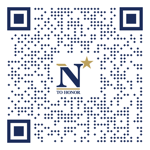
The "category" links below lead to lists of related Honorees; use them to explore further the service and sacrifice of alumni in Memorial Hall.
